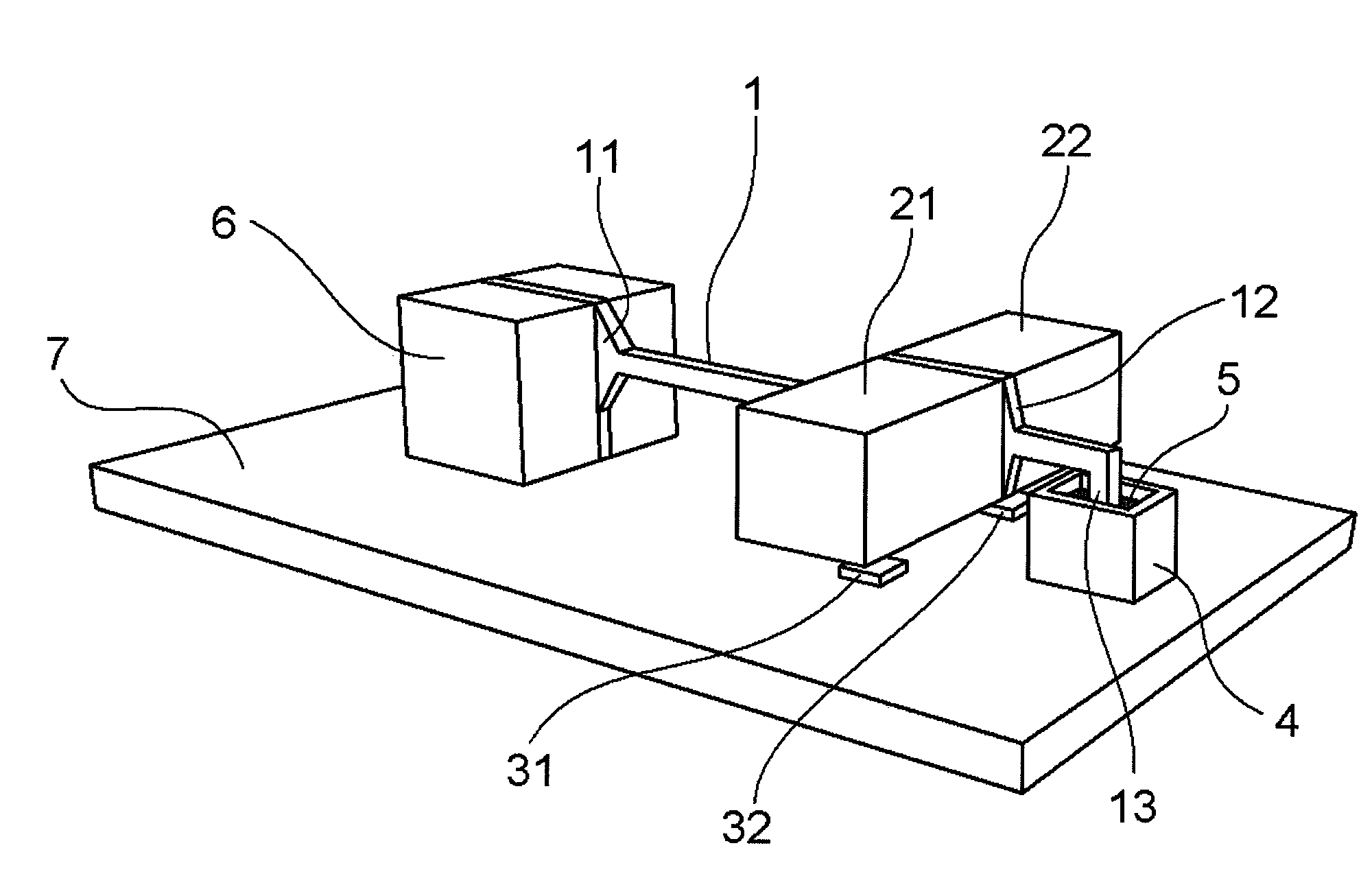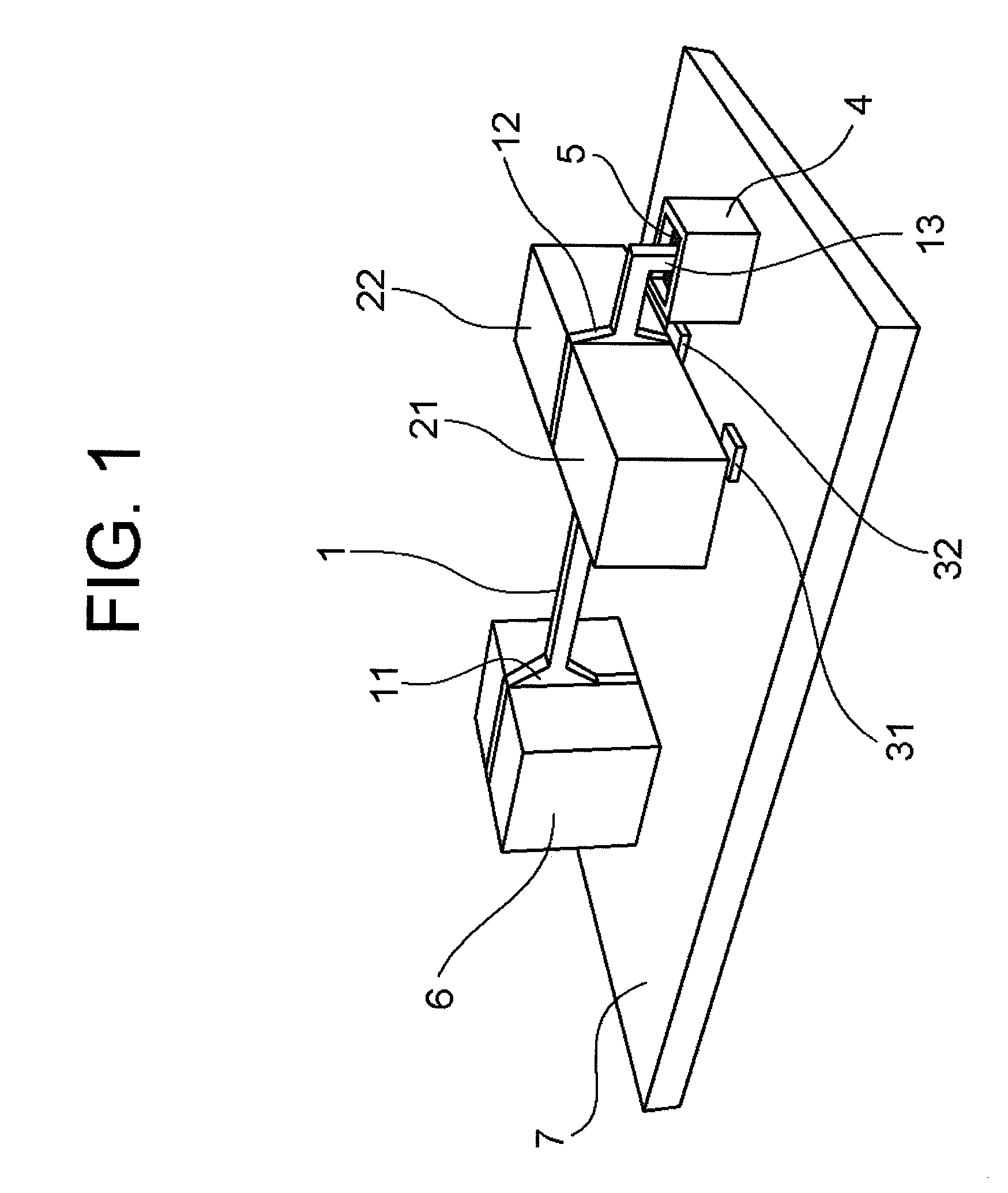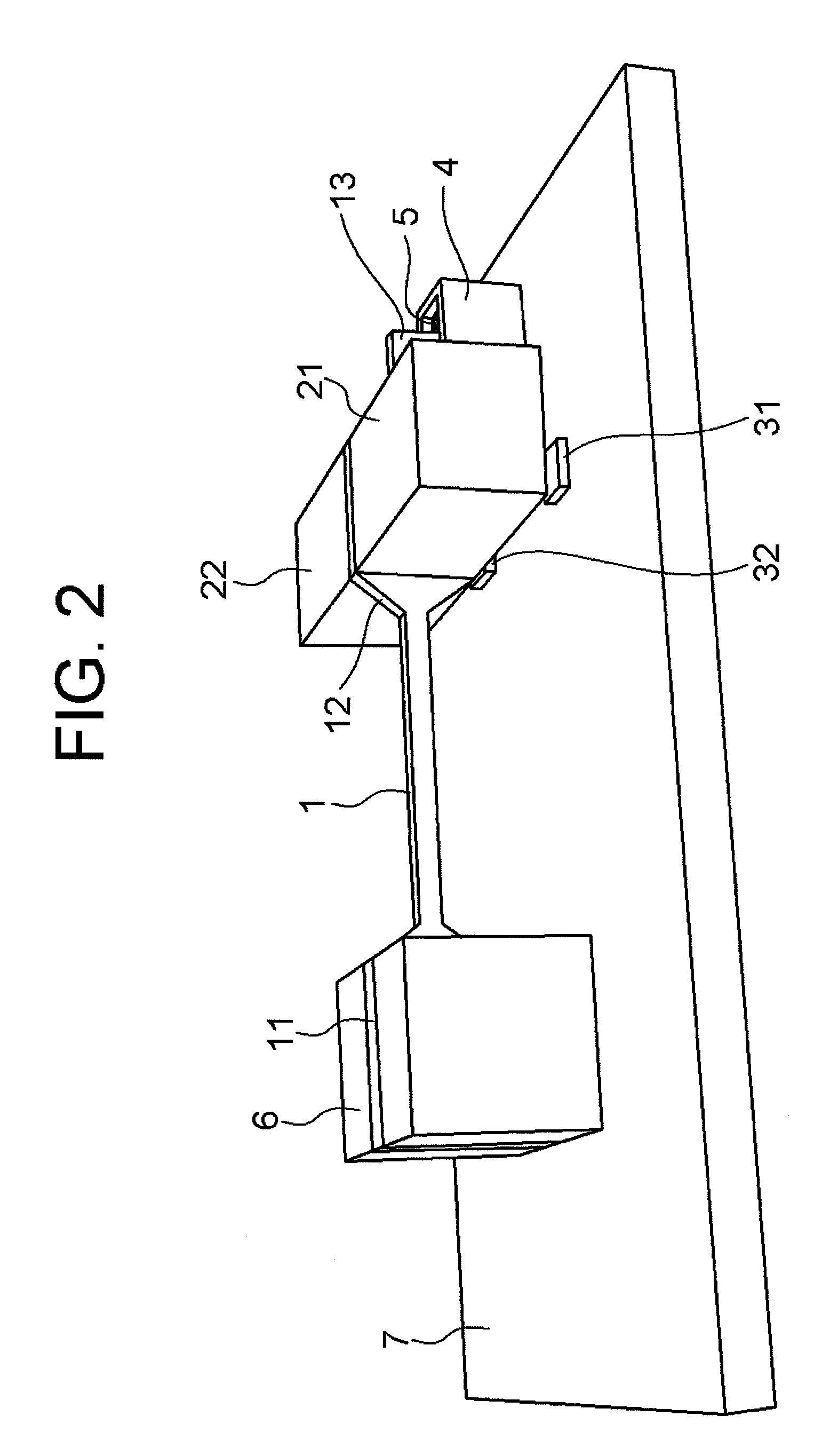Tilt angle sensor and detection-target device comprising the same
a technology of tilt angle sensor and detection target, which is applied in the direction of instruments, nanomagnetism, magnetic measurements, etc., can solve the problems of likely noise detection, and achieve the effect of improving sensitivity and accuracy and simple structur
- Summary
- Abstract
- Description
- Claims
- Application Information
AI Technical Summary
Benefits of technology
Problems solved by technology
Method used
Image
Examples
first embodiment
[0044]A first embodiment of the present invention will be described by referring to FIG. 1-FIG. 8. FIG. 1-FIG. 4 are block diagrams of a tilt angle sensor of the first embodiment viewed from various directions. FIG. 5 is a detailed illustration of the tilt angle sensor in a disassembled state. FIG. 6-FIG. 8 are illustrations for describing a theory about detecting tilt angles.
(Structure)
[0045]First, FIG. 1 is an illustration of the tilt angle sensor of the first embodiment viewed obliquely from the top end side, and FIG. 2 is an illustration thereof viewed obliquely from the rear end side. FIG. 3 is an illustration of the tilt angle sensor viewed from the above, and FIG. 4 is an illustration thereof viewed from the side. Further, FIG. 5 is a detailed illustration showing each disassembled part of the tilt angle sensor.
[0046]As shown in those illustrations, the tilt angle sensor comprises a mount base 7 for loading each structural elements, a supporting block 6 fixed on the mount bas...
second embodiment
[0063]Next, a second embodiment of the present invention will be described by referring to FIG. 9-FIG. 10. FIG. 9 is an illustration of a tilt angle sensor according to the second embodiment viewed obliquely from the front, and FIG. 10 is an illustration thereof viewed almost from the straightforward direction.
[0064]The tilt angle sensor according to the second embodiment employs almost the same constitution as the one disclosed in the above-described first embodiment, except for the structure of a dash pod 104. As shown in FIG. 9 and FIG. 10, the dash pod 104 according to the second embodiment has two plate-like parts extended upwards in parallel, and it is formed to open upwardly in substantially U-letter form. A gel 105 having a prescribed viscosity is filled between the two plate-like parts. The gel 105 is housed by being remained within the U-letter part of the dash pod 104 because of the viscosity. The lower end part of the bent part 13 that is a part of the suspension 1 is di...
third embodiment
[0066]Next, a third embodiment of the present invention will be described by referring to FIG. 11-FIG. 12. FIG. 11 is an illustration of a tilt angle sensor according to the third embodiment viewed obliquely from the front, and FIG. 12 is an illustration thereof viewed almost from the straightforward direction.
[0067]The tilt angle sensor according to the third embodiment employs almost the same constitution as the one disclosed in the above-described second embodiment, except for the shape of the tip part of the suspension 1. A dash pod 204 according to the third embodiment has two plate-like parts extended upwards in parallel, and it is formed to open upwardly in substantially U-letter form, as in the case of the second embodiment. The height of the two plate-like parts is set higher than the case of the second embodiment, and a gel 205 having a prescribed viscosity is filled therebetween.
[0068]A far end part 213 of the suspension 1 according to this embodiment is not bent downward...
PUM
 Login to View More
Login to View More Abstract
Description
Claims
Application Information
 Login to View More
Login to View More - R&D
- Intellectual Property
- Life Sciences
- Materials
- Tech Scout
- Unparalleled Data Quality
- Higher Quality Content
- 60% Fewer Hallucinations
Browse by: Latest US Patents, China's latest patents, Technical Efficacy Thesaurus, Application Domain, Technology Topic, Popular Technical Reports.
© 2025 PatSnap. All rights reserved.Legal|Privacy policy|Modern Slavery Act Transparency Statement|Sitemap|About US| Contact US: help@patsnap.com



